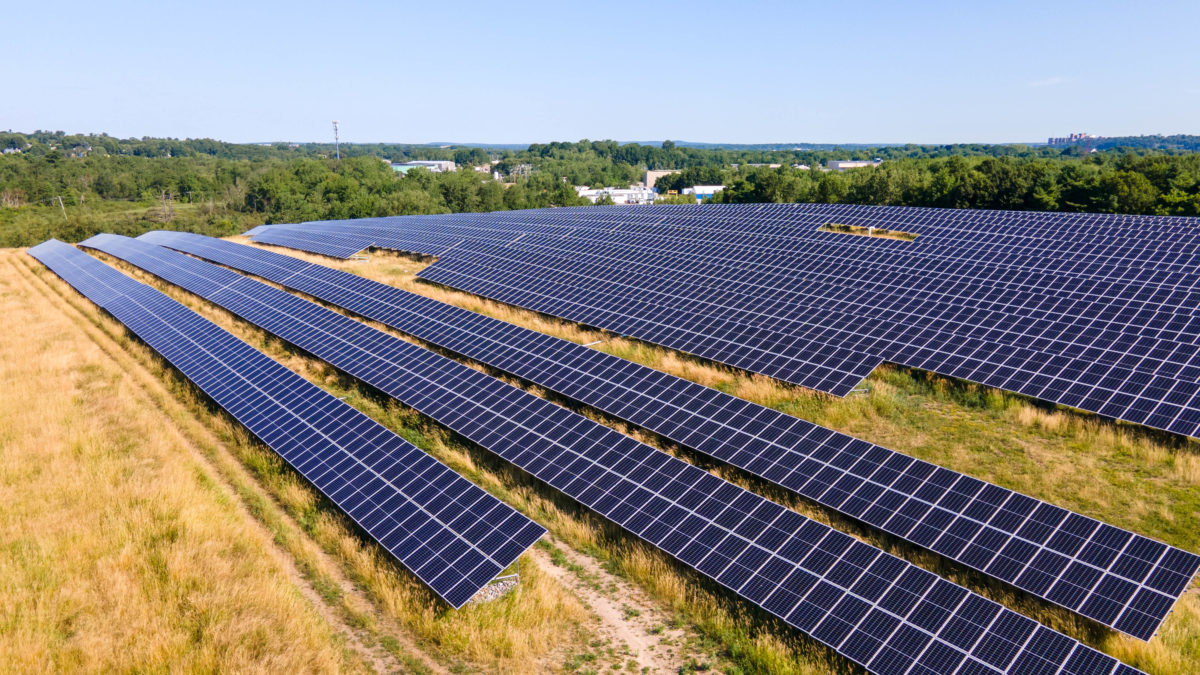The Inflation Reduction Act of 2022 (IRA) makes available several new financial incentives to encourage the installation of clean energy projects in economically stressed locations. One such incentive is a bonus federal tax credit for projects built on brownfield sites. The brownfield credit is available for wind, solar, geothermal, and other renewable power projects, as well as energy storage facilities, green hydrogen projects, and biogas manufacturing plants.
The brownfield credit is significant. Project owners receive a 10% adder on top of either a Section 48 investment tax credit (ITC) or a Section 45 production tax credit (PTC). A project qualifying for the base 30% ITC would earn an additional 10% ITC, for a total 40% ITC tax credit, while a project receiving the base PTC would earn an additional 10% increment on top of the PTC. Thus, a project qualifying for a PTC of $27.50/MWh would receive an additional $2.75/MWh.
A project developer that wants to qualify for the brownfield credit should be careful not to present a case that also exposes it to potential cleanup liability or environmental remedial actions, thereby undermining the economic value of the tax credit. The IRS has published guidelines that are helpful to understanding how to walk this hazardous line to sidestep potential liability and still qualify for the brownfield credit. Notice-23-45.pdf
What qualifies as a brownfield site?
A brownfield site is one of three categories eligible for a new “energy community” bonus tax credit. The other two categories are:
- Areas that had significant employment related to oil, gas, or coal activities;
- Census tracts or adjoining tracts in which a coal mine closed or a coal-fired electric power plant was retired after December 31, 2009.
The energy community tax credits were created to encourage developers to build clean energy projects at sites that are disproportionately found in historically economically disadvantaged areas, and to repurpose environmentally distressed properties while providing other economic benefits to the community.
For purposes of receiving the tax credit, the IRS defines a “brownfield site” differently from the definition used by the Environmental Protection Agency (EPA) for Superfund liability and federal brownfield cleanup purposes.
The IRS definition of brownfield site is found in Section 39(A) of the Comprehensive Environmental Response, Compensation, and Liability Act of 1980, or CERCLA, 42 U.S.C. § 9601(39)(A). The IRS defines a brownfield site as:
Real property, the expansion, redevelopment, or reuse of which may be complicated by the presence or potential presence of a hazardous substance, pollutant, or contaminant (as defined under 42 U.S.C. § 9601) and certain mine-scarred land (as defined in 42 U.S.C. § 9601(39)(D)(ii)(III)). A brownfield site does not include the categories of property described in 42 U.S.C. § 9601(39)(B). Notice-23-45.pdf.
The Section 39(B) exclusion generally covers Superfund sites and other contaminated sites that are currently the subject of a court or administrative cleanup order, consent decree, or closure or removal action under designated federal laws.
Unlike the EPA cleanup program, the brownfield definition under the IRA does not include contamination from Controlled Substances (i.e., chlorofluorocarbons and other ozone-depleting substances) or petroleum products.
The EPA, however, recently expanded its definition of hazardous substances under CERCLA to include polyfluoroalkyl substances, otherwise called “PFAS.” PFAS are a group of chemicals found in a wide variety of consumer products, commonly referred to as “forever chemicals” due to their persistence in the environment.
The inclusion of PFAS in the brownfield definition significantly expands the number of potential sites that could be eligible for the brownfield credit. By the same token, it raises the risk that developers qualifying for the brownfield credit due to the presence of PFAS could end up becoming potentially responsible parties in a cleanup obligation under CERCLA. The EPA has carved out exceptions to incurring such liability. The prudent approach, however, is to carefully thread the needle to avoid opening up a project to this cleanup obligation in the first place.
Applying the safe harbor rules
The IRS definition of a brownfield site has three parts. The taxpayer must show:
- The presence or potential presence of a hazardous substance, pollutant, or contaminant on the site.
- That the presence or potential presence “complicates” the site’s reuse or redevelopment.
- That the site does not fall within the excluded category of properties in CERCLA Section 39(B), i.e., sites designated as Superfund sites or that are the subject of a court or administrative cleanup order, consent decree, closure, or removal action.
To simplify the process of qualifying for the brownfield credit, the IRS has established three “safe harbor” categories that it will consider as brownfield sites if a project satisfies any one of the categories and the site does not fall within the Section 39(B) exclusions:
- The site was previously assessed through federal, state, territory, or federally recognized Indian tribal brownfield resources as meeting the definition of a brownfield site under 42 U.S.C. §9601(39)(A). Examples of these sites can be found in the category of Brownfields Properties on the EPA’s Cleanups in My Community website or on similar websites maintained by states, territories, or for federally recognized Indian tribes.
- An ASTM E1903 Phase II Environmental Site Assessment (Phase II ESA) is completed for the site using the most currently applicable ASTM standards that confirms the presence on the site of a hazardous substance, pollutant or contaminant as defined under CERCLA.
- If the project has a nameplate capacity no greater than 5MW (AC), an ASTM E1527 Phase I Environmental Site Assessment (Phase I ESA) has been completed for the site using the most currently applicable ASTM standards, and the Phase I ESA identifies the presence or potential presence of a hazardous substance, pollutant or contaminant as defined under CERCLA.[3]
How must a contaminant “complicate” use of a site?
The IRS safe harbor guidelines provide a straightforward way to qualify for the brownfield credit. Notably, the guidelines do not explicitly require a showing that the second prong of the statutory brownfield definition is satisfied, i.e., that the contaminant “complicates” reuse or redevelopment of the site.
The IRS seems to suggest that if one of the safe harbor conditions has been met it will presume that the “complicates” prong is satisfied (The IRS “will accept that a site meets the definition of a brownfield site…if it satisfies at least one of the [three safe harbor] conditions and the site is not described in [CERCLA Section 39(B)].” Notice 2023-29.)
It nevertheless may be prudent for a taxpayer to provide evidence that the presence of contaminants at the site complicates its development or reuse. Such a showing also will be necessary where a project does not fit into the safe harbor categories.
The word “complicate” is a fairly broad term and is not defined either in the IRA or in CERCLA. The term, however, has been interpreted by the courts and the EPA in the context of CERCLA’s brownfield definition. It has been construed to mean “can add cost, time or uncertainty to a redevelopment project,” or make redevelopment “more complex, involved, or difficult in some way.”
These cases make clear that the phrase “may complicate” does not have to rise to the level of a recognized environmental condition, or REC, which can trigger a cleanup obligation or remedial action under federal or state environmental laws.
Thus, the New York Court of Appeals in Lighthouse Point, interpreting the CERCLA brownfield site definition, held that the “statutory definition does not, on its face, mandate the presence of any particular level or degree of contamination.” Rather, the property will qualify as a brownfield site, “as long as the presence or potential presence of a contaminant within its boundaries makes redevelopment or reuse more complex, involved, or difficult in some way.”
There are several ways to potentially demonstrate how the presence of a contaminant will increase the cost or otherwise make redevelopment of a site more difficult. An environmental consultant who finds the presence (or potential presence) of a contaminant in a Phase I or Phase II ESA, for example, can recommend that the developer or landowner:
- Use protective equipment or take other precautionary measures for workers on the site.
- Exercise caution and take protective measures to not unduly disturb soil or groundwater when installing e.g., project foundations, pilings, conduits, frameworks, etc.
- Undertake testing procedures or install monitoring equipment to check for contaminants.
- Place transmission lines and other conduits above rather than underground to avoid soil disturbances.
- Reroute roads and other easements to avoid potential contaminated areas.
- Apply other common-sense restrictions to site development such as prohibiting installation of drinking wells, residential structures, playgrounds, day care facilities, etc. on the property.
How close to a contaminated area must a project be located to qualify for the brownfield credit?
For the other two “energy community” categories, the IRS looks to see where the energy project will be built to determine whether it is actually “located in” an energy community. For example, the IRS rules use a nameplate capacity test to require that at least 50% of the project’s footprint is located within the census tract that had significant employment related to oil, gas, or coal activities.
Similar locational language does not appear to be applicable to brownfield sites. The IRS instead will permit a project to be located anywhere on a site where a hazardous substance, pollutant, or contaminant is present without requiring that the project be located on the contaminated portion of the site. The IRS states that:
A brownfield site is delineated according to the boundaries of the entire parcel of real property, the expansion, redevelopment, or reuse of which may be complicated by the presence or potential presence of a hazardous substance, pollutant, or contaminant. A brownfield site is not limited to only the portion of a parcel of real property that has or may have a hazardous substance, pollutant, or contaminant that complicates redevelopment.
Accordingly, if a project satisfies the safe harbor rules, or demonstrates that the presence or potential presence of contamination on the site may complicate its redevelopment or reuse, then the project will be eligible for the brownfield credit, whether or not the project is located on the contaminated portion of the brownfield site.

Merrill L. Kramer is an attorney and partner at Pierce Atwood in Washington D.C. He represents energy project developers, private equity companies, and institutional lenders on the development, financing, sale, acquisition, and investment in energy projects and portfolios. He has been ranked as one of the top energy lawyers in the country by Best Lawyers, Martindale-Hubbell and The Legal 500and recently was awarded the National Law Review’s “Go-To Thought Leadership Award” for his detailed and cogent analysis of the impact of the Inflation Reduction Act of 2022 on the clean energy industry.
The views and opinions expressed in this article are the author’s own, and do not necessarily reflect those held by pv magazine.
This content is protected by copyright and may not be reused. If you want to cooperate with us and would like to reuse some of our content, please contact: editors@pv-magazine.com.








By submitting this form you agree to pv magazine using your data for the purposes of publishing your comment.
Your personal data will only be disclosed or otherwise transmitted to third parties for the purposes of spam filtering or if this is necessary for technical maintenance of the website. Any other transfer to third parties will not take place unless this is justified on the basis of applicable data protection regulations or if pv magazine is legally obliged to do so.
You may revoke this consent at any time with effect for the future, in which case your personal data will be deleted immediately. Otherwise, your data will be deleted if pv magazine has processed your request or the purpose of data storage is fulfilled.
Further information on data privacy can be found in our Data Protection Policy.